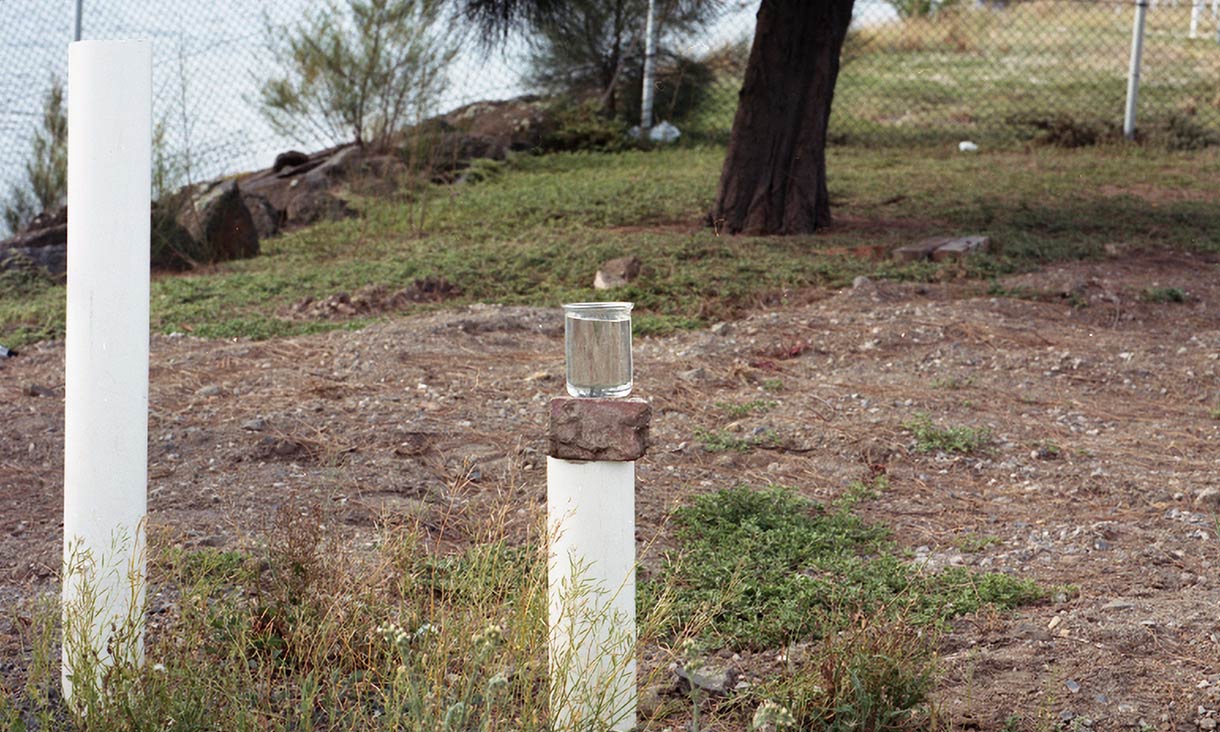First Site Gallery and PHOTO 2022 present 'Construction and Destruction', a new project by Naarm-based collective COLLIDER, which explores the impact of human inhabitation.
26 Apr to 20 May 2022
Opening night: 5.30-7.30pm, Tuesday 3 May 2022. Free. RSVPs essential via EventBrite.
First Site Gallery, Basement/344 Swanston St, Melbourne VIC 3000 (view map location).
 COLLIDER, 'Construction and destruction' (detail) 2021. Photo courtesy the artists.
COLLIDER, 'Construction and destruction' (detail) 2021. Photo courtesy the artists.
In 1879, John Coode recommended a series of alterations to the Maribyrnong and Birrarung rivers. The Maribyrnong was deconstructed and re-routed to prevent the frequent and ecologically necessary flooding of the area. Once a vast wetland, the area is now host to concrete factories, oil storage facilities, and a sugar processing port. The activity of industry silences the echoes of a once thriving natural ecosystem.
In an attempt to unlearn normative settler perspectives, COLLIDER began to retrace the First Ecologies of the Maribyrnong and Birrarung river systems. In doing so, we found extensive acts of violence committed against these ecological systems hiding in plain sight; expertly forgotten. Like so many aspects of colonisation, the everlasting and irreversible effects of these violent infrastructural projects are disturbingly quiet. 'Construction & Destruction: An Index of Violence' is an examination of the ways in which invisible markers on the land create patterns of continual colonial violence. In an attempt to subvert this invisibility, COLLIDER set out to return water to where it previously flowed in the river's pre-colonial state.
Using photographic & post-photographic techniques, sculptural photography objects have been utilised to fill the gaps where two-dimensional images fall short of fully articulating the realness of place, and the scale of events that have transpired there. Through their interrogative works, COLLIDER has sought to make visible a messy truth; a colonial desire to construct systems of purity, control and containment.
In a similar sense to photographic film’s capture and containment of light, the sculptural objects act as a blank medium unto which a physical dialogue between material and environment renders an ‘image-object’. The physical attributes of glass reject the recording of light, instead constructing an indexical exchange of temporal material entanglements.
The sculptural objects introduce an index into the gallery, challenging and complicating the adoption of a detached spectatorship, whereby images are merely “looked through”. Instead, the work asks the audience to sit with and contemplate a confronting reality.
Artist bio
COLLIDER was formed by 4 settler artists—Maud Freeman, Zachariah Micallef, Adrian J. Song and Sophie Spence—as a means to examine and unlearn coloniser perspectives. Through image and gesture, COLLIDER works to draw attention to quiet markers of conflict, making visible evidence of past and ongoing violences which permeate our [Australian] ecological and social memories.
